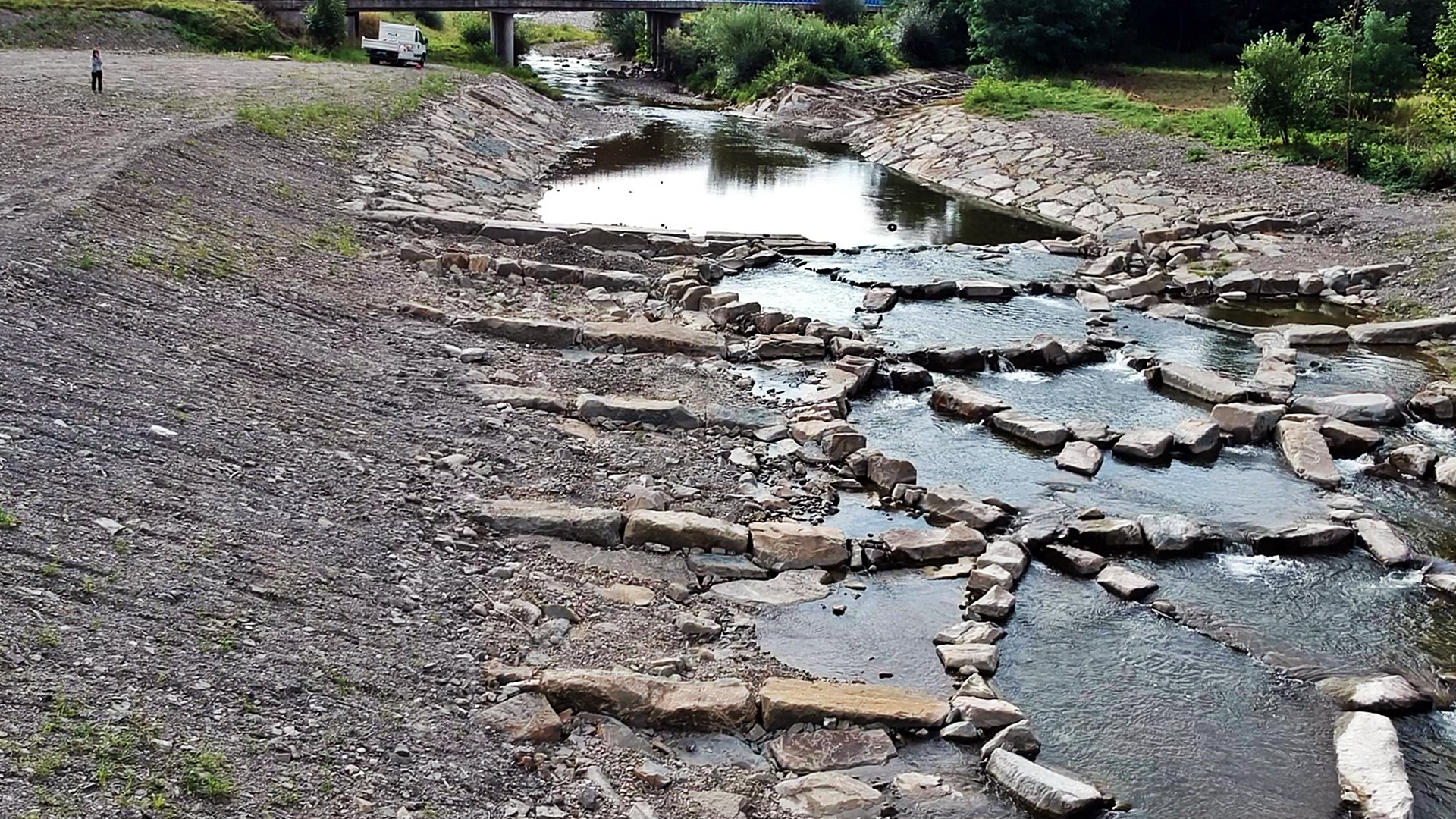Local floods and flooding due to torrential rains in the second half on June confirm what experts warned: drought doesn’t exclude the risk of flooding. The Polish Water Holding Polish Waters in March 2020 started updating flood risk management plans (PZRP). The methodology of their elaboration was the subject of an expert debate, which took place on 23 June. It was the first in a series of conferences in the Polish Waters’ Stop Flood project.
Drought and flooding are two of the consequences of climate change that we have experienced recently. Drought is more predictable, it develops slowly, and thanks to the conducted monitoring, its extent is easier to predict. It almost always has its origins in winter (snowless conditions) and is also result of the hydrological situation in previous years. The problem of drought was clearly visible this spring. Although the hydrological situation has improved in recent weeks, the abundant rainfall (especially in the south of the country) hasn’t replenished the existing water deficit in the environment, which has persisted for several years. Flooding is much less predictable phenomenon, often very violent, quickly generating losses and, importantly, also in areas with large surface water deficits. Therefore, even in drought areas, the so-called “great water” may occur, and the danger of flooding arises already in the case of several hours of torrential rain. Such a situation has been experienced in recent days, among others in the province Lower Silesian, Silesian, Opole voivodships, Lower Poland and points, also in other regions.
Comprehensive water management strategy
– The issue of water in our country must be looked at comprehensively. It’s this approach that makes it necessary to see flooding and drought as two aspects of the same problem: the dangerous effects of climate change, manifesting itself in water shortage or excess. Therefore, while forecasting actions to minimize the risk of flooding, we should try to remember about the increasingly frequent phenomenon of drought in our country. And vice versa. It’s crucial to adopt a coherent strategy, both on a national and local scale, which enables protection against the effects of extreme hydrological phenomena – said Krzysztof Woś, Deputy President of Polish Waters for Protection Against Floods and Droughts, during an online conference. A very important change in this strategy is, among other things, a new approach to the issue of retention, including the recommendation to build multifunctional reservoirs that collect rainwater during the period of flooding and preserve it during drought. Actions in the field of large and small retention, as well as micro-retention are necessary.
Safety and minimization of losses
The losses caused by supra-local floods are always enormous. In 2010, the largest flood wave on the Vistula River in 160 years (since the measurements were started) caused a catastrophic flood, which affected 60 thousand people and caused losses calculated at over 12 billion PLN. This happened only 13 years after the tragic flood of the millennium in 1997, which mainly affected southern and western Poland. Since its inception, Polish Waters meet the requirements of the so-called The EU Floods Directive, incorporated into Polish law in 2012. Among other things, we are obliged to prepare a number of planning documents concerning flood risk.
The flood strategy recommended in one of them – the Flood Risk Management plans (PZRP) – is based on three pillars. The first one is to move floods away from people by, among other things, recommending the construction of retention tanks and embankments and natural retention activities. The second is to keep people away from floods through proper spatial planning to avoid construction, especially residential, in flood plains. The third pillar requires us to learn to live with and manage floods as effectively as possible, to deal with them during and after a flood, e.g. through the development of an early warning and forecasting systems, flood education in the broadest sense, including social security, preparation of buildings for flooding, etc. Public awareness is of great importance in reducing risks and potential losses, allowing for more efficient rescue operations and more effective recovery from flooding.
Currently, the Polish Waters are implementing the 2nd planning cycle of the Floods Directive. The project entitled “Review and update of flood risk management plans” is the last element of the planning documents (after the preliminary flood risk assessment and flood hazard maps and flood risk maps). In June, a survey was completed, addressed to more than 4,000 stakeholders, with the aim of gathering information on the measures already implemented, underway and only planned, which have an impact on minimizing flood risks and reducing flood losses. In the first months of the project, a methodology for updating the PZRP was prepared, which sets the direction of work and details the planned approach to the analyses in the project. The most important element of the PZRP projects will be a list of recommended technical and non-technical measures to be implemented. These projects will be subject to six-month public consultations at the end of 2020, so that the final version of updated PZRPs can be adopted at the end of 2021.




